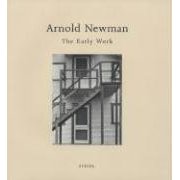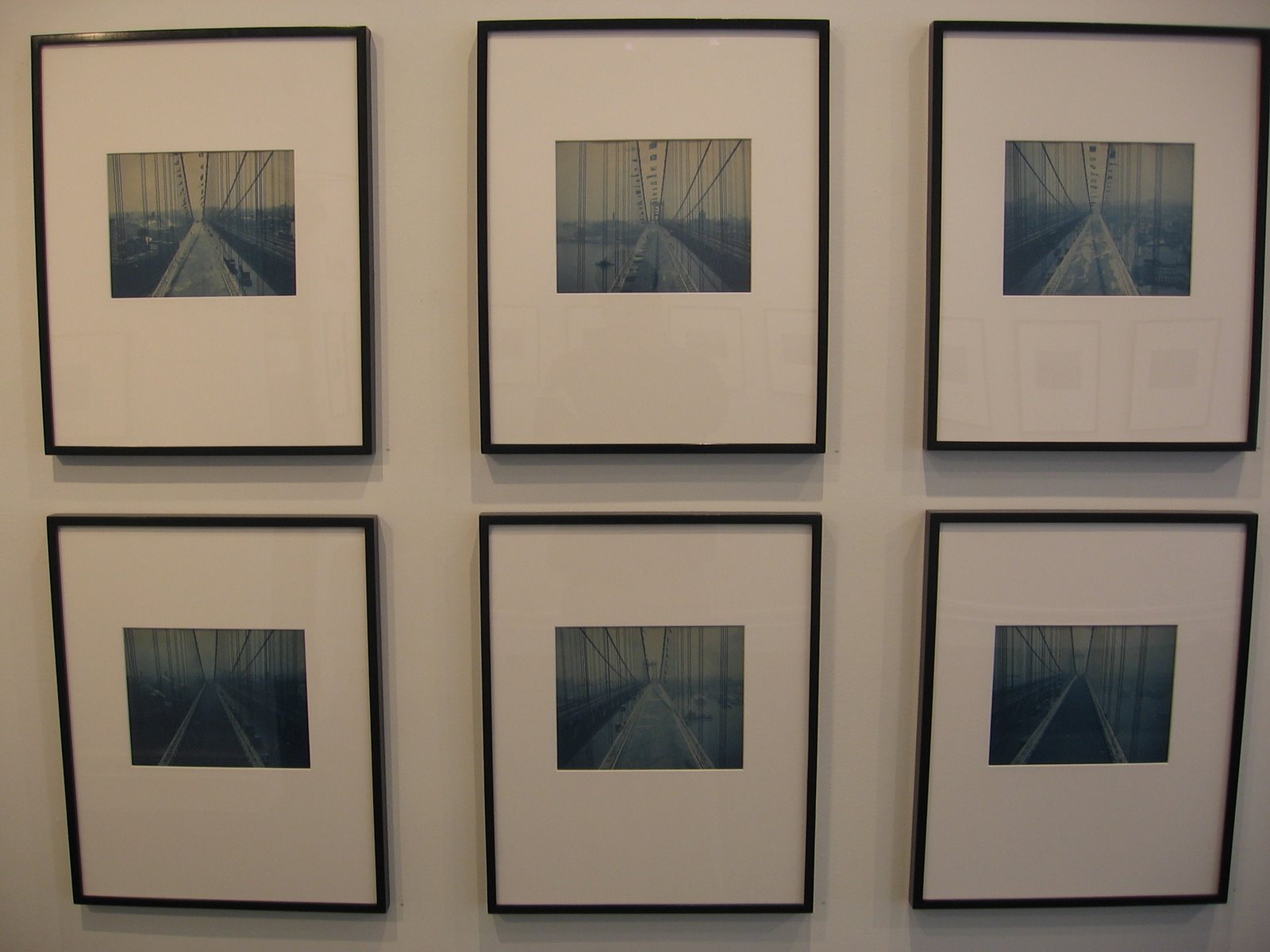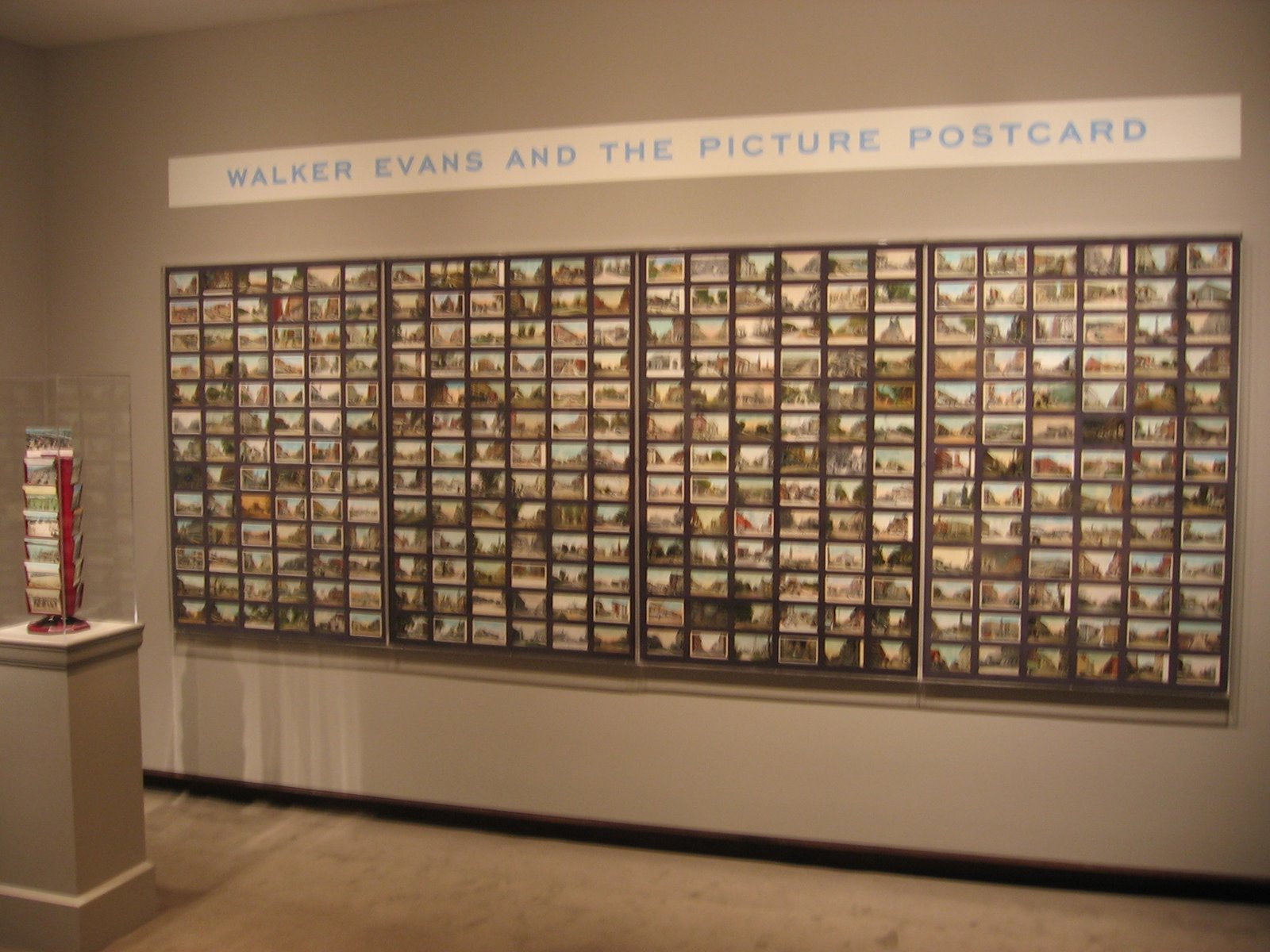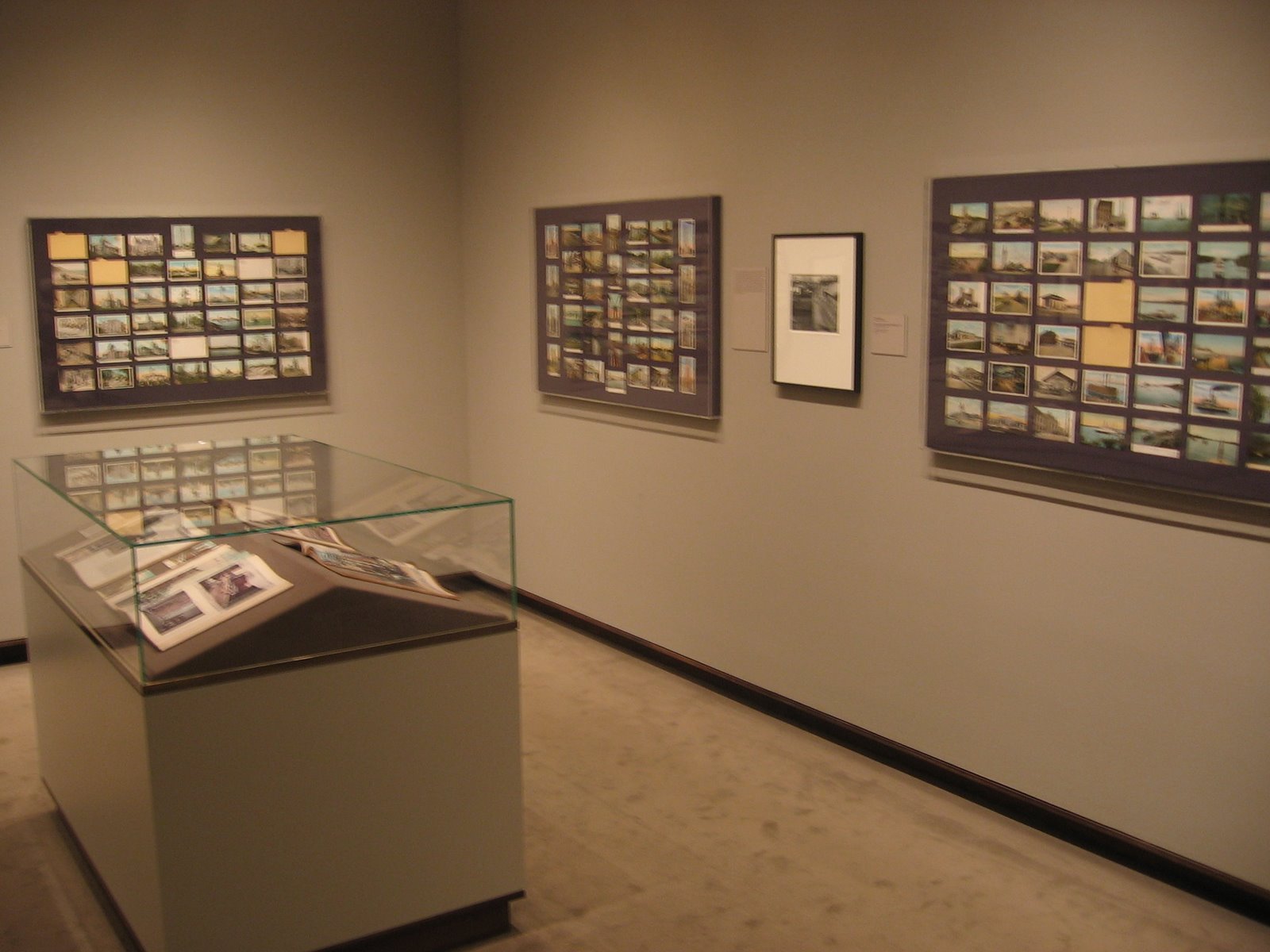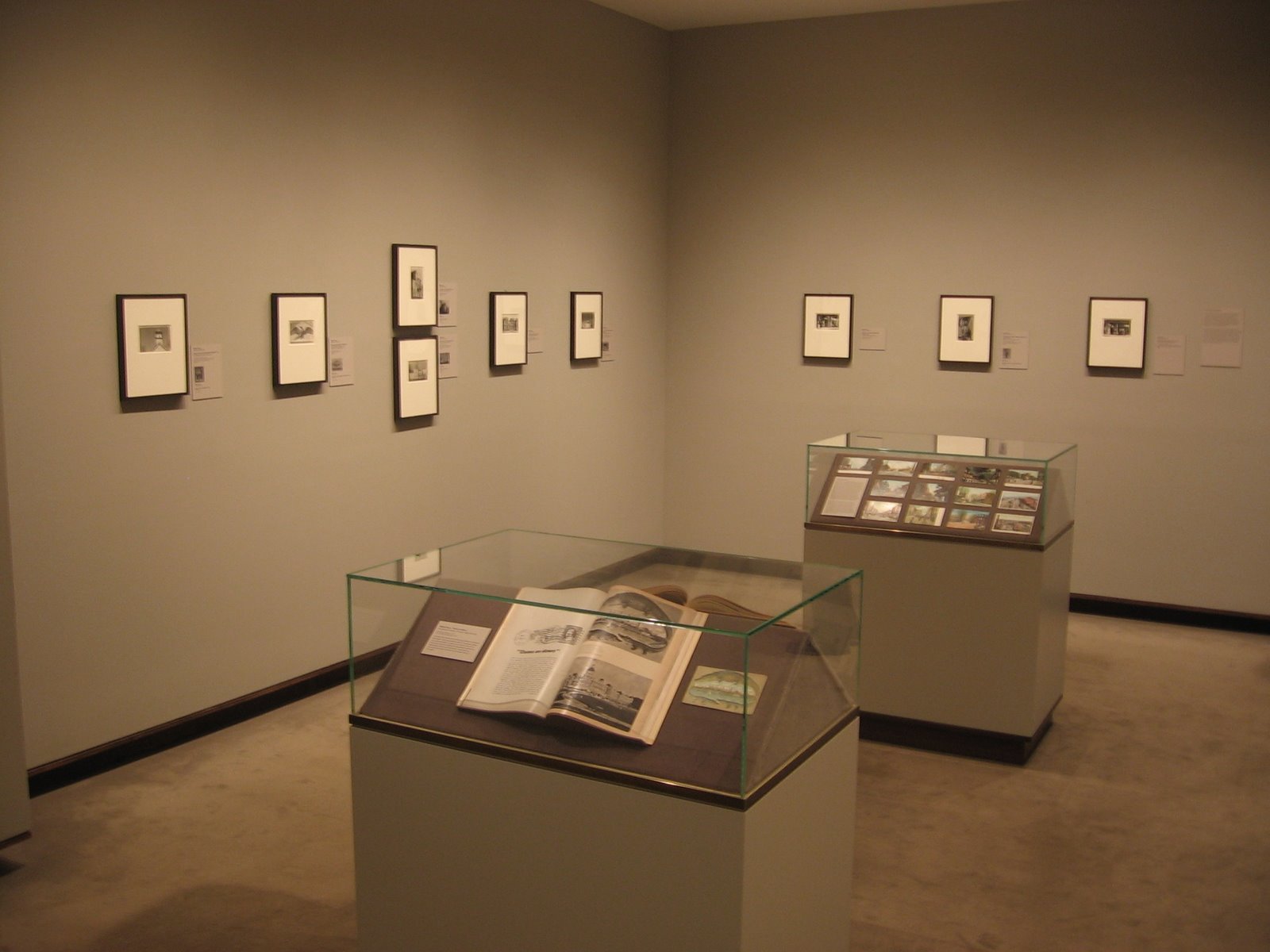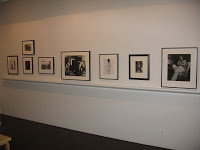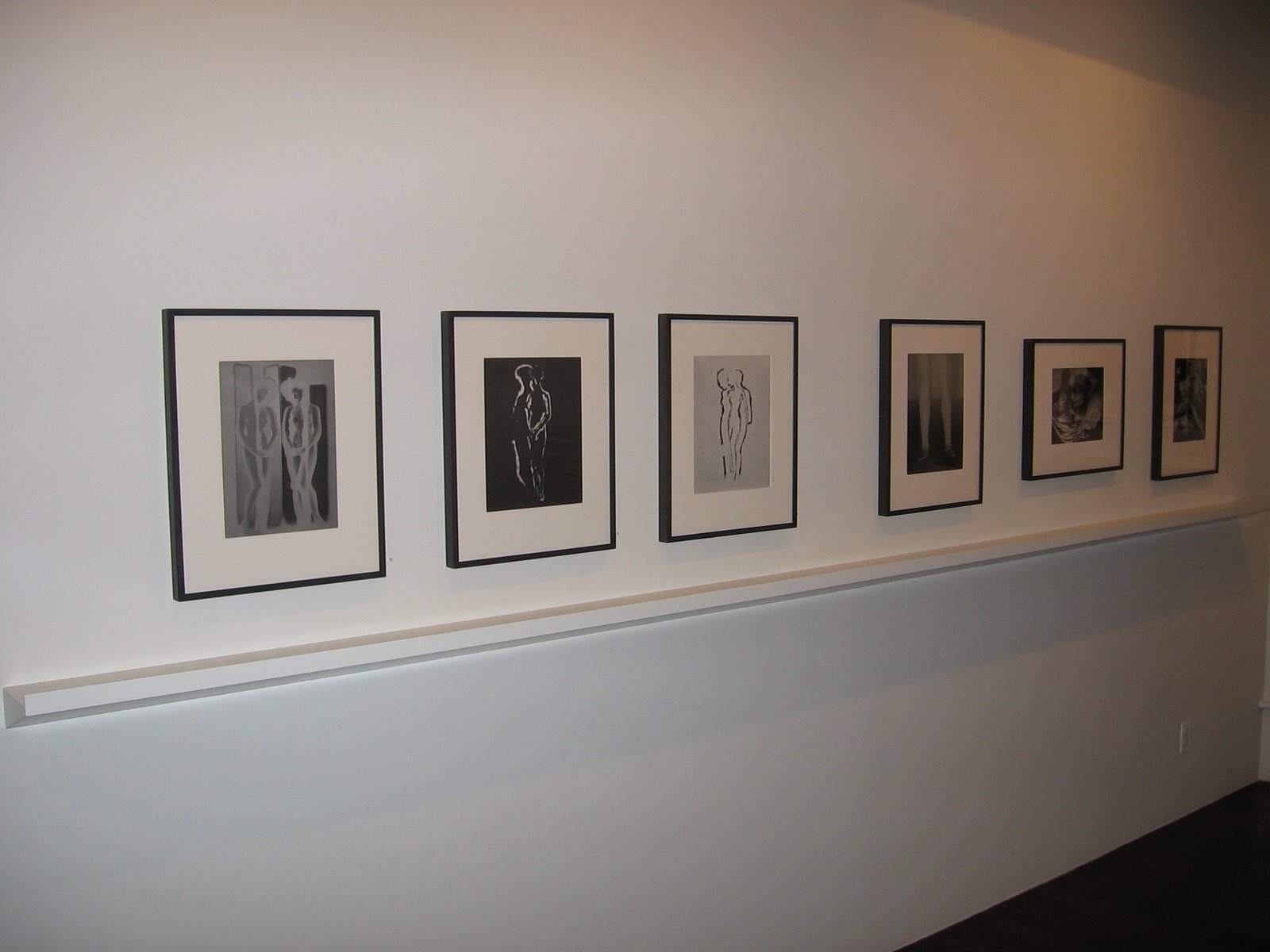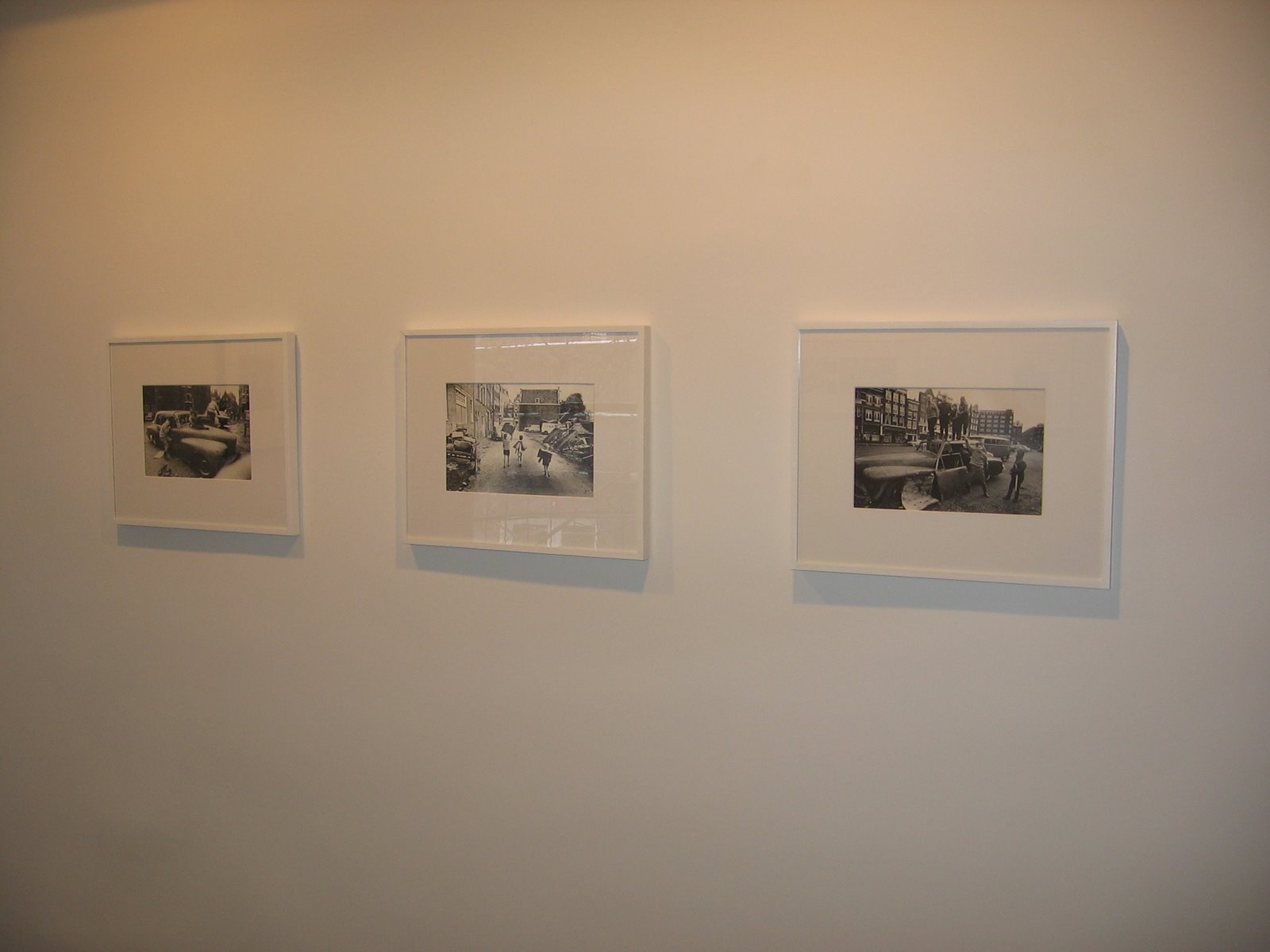I had originally planned to let the Art Blog Triangle quietly die into the oblivion of the archives, but there has been so much interest in it that I feel compelled to provide a follow up post with some additional comments and ideas. For those of you that find this discussion tedious, we’ll be back to our normal range of topics tomorrow.
Soon after the first post, Joerg Colberg of Conscientious contacted me and mentioned that he had been thinking about some of the same ideas. In fact, last fall, he collected some detailed statistics on nearly 40 photography blogs he was following (not designed to be a representative sample of all that is out there, just a group that he was reading consistently). For the period of roughly two months (October 17 through December 16 of 2008), he categorized each and every post by these blogs into nine different buckets, based on the content of the post. His original purpose was just to get a more detailed look into what various blogs really contained, including some aspects that aren’t relevant to this study.
He hadn’t yet decided what to do with the data, and so he sent it all over to me. He wasn’t following us during that time, since we had just gotten started, so I went back and used his formulas to categorize our posts into his buckets, using that same time period. Joerg also didn’t collect data on some of the broader art blogs we follow, so we’ve left those aside for the moment (these were C-Monster, Edward Winkleman, MAO, and Modern Art Notes, even though I believe they are generally accurately placed in the first triangle).
We then spent some time slicing and dicing the data into a spreadsheet, merging his categories into the COMMENT, CURATE, PROMOTE framework and recasting the formulas. What popped out were some detailed statistics about each blog and its relative position in the triangle, but instead of using my finger in the air anecdotal method, we now had actual numerical data to back up the placement of the blogs in the map. Of course, underlying these numbers are the original definitions of the categories, so if you don’t buy those definitions, then you won’t likely agree that the conclusions are valid (which is OK by the way). So another person might arrange these data in another way and get very different conclusions. Thus, as a reminder, the particular categories here and the specific view they represent drive the data.
Without going into the gory statistical detail of each and every blog, we can start with the conclusion that the general placements in the first version of the Art Blog Triangle were right for the most part. From there, we have the following second level of detail:
*We (DLK COLLECTION) were the only blog in the study pinned into the COMMENT corner. 5B4 and Fugitive Vision were a bit further out, slightly closer to PROMOTE than I had placed them originally, but still mostly in this zone. Horses Think (which I wasn’t following) is another located in this general corner.
*The CURATE corner had Conscientious and Mrs. Deane as we had expected, but was much more crowded than we knew. Other active blogs that were clustered in this corner were: I Heart Photograph, Hippolyte Bayard, The Sonic Blog and Shooting Wide Open among others.
*The PROMOTE corner did have Exposures at its vertex as we claimed, and there were many, many more blogs that live in this neighborhood (Joerg had 18 blogs that I wasn’t aware of that ended up in this area). Nymphoto was another I wasn’t following that was centered in this corner. As I mentioned in the first post, most of these are artist blogs that include some form of discussion/PR of their own work and activities, with a smattering of commentary on other topics of interest. Mangum did indeed have the most in depth commentary of these artist blogs, and thus stayed about where it was in the first version. Rather than listing them all, we’ll continue to use Amy Stein’s blog as the proxy for all the rest in this genre.
*There were another dozen blogs that were more balanced, living in the middle zones of the triangle, often with surprisingly equal parts of each approach. The Year in Pictures was actually much further to the left and much closer to the middle than I had placed it. So overall, this area was more populated than I had led you to believe.
So without much fanfare here’s the Photo Blog Triangle diagram, version 2.0, now built upon more reliable statistical data (with the general art blogs removed and using the Tri-Plot Excel add-in for accuracy):
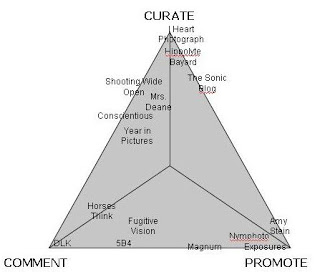
Many of you have offered other ideas or parameters to consider. One interesting idea (from Blake Andrews’ blog) was that there could be a fourth axis for REFLECT, as many artists blogs are in concept about thoughtfully considering their art, rather than crassly promoting it, as the triangle might have you believe. This indeed is possible, but if artists were actually writing in depth pieces about photography (theirs or someone elses), I think this would have been captured in the data by COMMENT, as we basically threw anything that was text heavy into this bucket. So while many of you out there may think of yourselves as using your blog to reflect, I’m not sure the data we gathered supports that conclusion; maybe you just need to write more deeply more often, as short snippets tend to be captured in CURATE.
Another idea was that blogs are used to EDUCATE. I think that’s entirely right, and different folks use the medium in different ways to educate others (and themselves). We find COMMENTing the best way to increase our education. Conscientious uses CURATEing (misspelling on purpose) to introduce us to photographers we might not know. Others use a mix of both, plus discussion of their own work to teach others. All these paths are valid and successful. The data we used for this study didn’t distinguish between text heavy posts that were meant to REFLECT or EDUCATE, so someone else will have to gather some more fine grained data to get at these nuances.
We have purposely tried not to list every last blog that was tallied, in the effort to be inclusive rather than exclusive in the findings. Again, the sample used is not meant to be representative and the absolute number of posts is not reflected in the way the data is presented. There are many, many great blogs out there covering photography in different ways, and we don’t want anyone to feel like we think their approach is somehow less “right”, especially if they post more infrequently (as many of these blogs were generally left off of this study due to lack of good data).
At the core, this was an exercise in observation of just what was really going on out there in the photo blogosphere, not any kind of judgment of good and bad. That said, our general conclusion is that we’d like to see even more great photography writing of all kinds. So we both feel doubly compelled to upgrade our efforts and keep up the pace. We hope you will too. As always, comments are welcome, and who knows, maybe there will be a Photo Blog Triangle version 3.0 someday.
The original post, as background, can be found here. Joerg’s post on the project can be found here.
